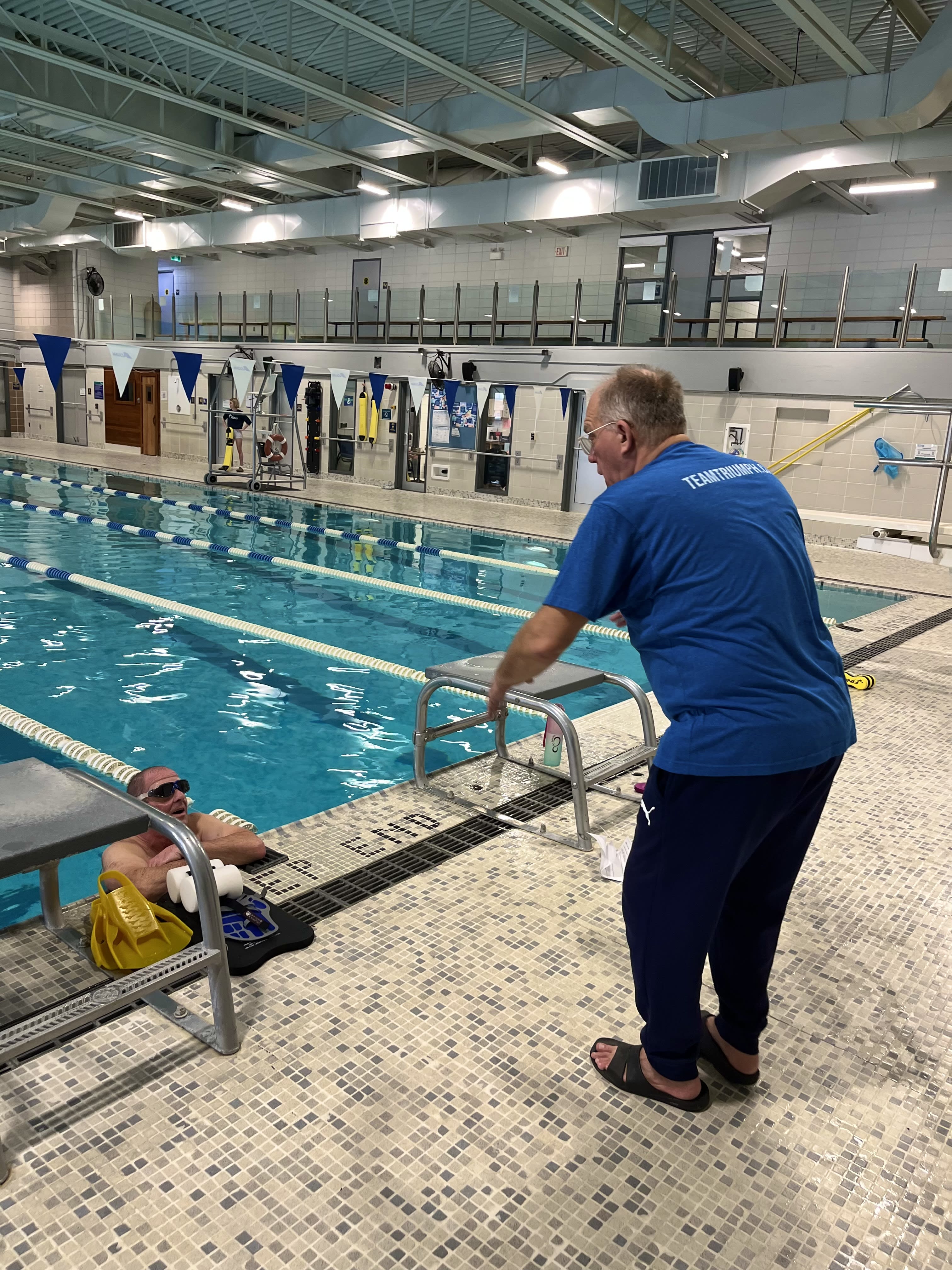
I was asked to write about my journey into endurance sports, joining Team Triumph and more specifically low carb endurance training and racing. I will start at the end and then go back to the beginning.
| I limped into my first meeting with Julia in January of this year. At that point, I hadn’t been able to run for about 4 months because of a bad case of plantar fasciitis. Time was running out and I had to find a coach and get started if I was going to meet my goals for 2018. Fast forward to 8 months later, I ran my first marathon, did my first full Rideau Lakes Cycle Tour and completed my first Ironman at Mont Tremblant. |
My journey began about 3 years ago when, like many people, I read “Born To Run” by Christopher McDougall. Inspired by this book, I quit smoking, took a Chi running class with Eric Collard and began logging miles. As I’m prone to do, I went a little overboard. For most of that year, I averaged 10K a day, 7 days a week. No days off! Dumb.
In the fall of that year, I bought a bike and started commuting to work. I now enjoy riding year round and winter riding has become one of my favorite activities. Now that I was running and riding I guess it was inevitable I’d end up doing a triathlon. “Born to Run” also introduced me to Dr. Phil Maffetone who has had a huge influence on my diet and training for fitness and endurance.
Although I’ve incorporated a number of different variations of low carb training approaches including Mark Sissons’ Primal Endurance, they’re all based on Maffetone’s fundamental tenets:
As for the level of reduction of carbs, that’s the core debate that everyone loves to argue about. There are lots of scientists a lot smarter than me that have strong opinions on both sides so all I can comment on is how it affected and worked for me. I’ve done all of the ranges and find less carb is better for me but my recommendation for anyone interested in trying this approach is to go slow and do what makes you feel best with an eye to lowering carb intake gradually. I’ve been in ketosis and I felt fine but overall I think I feel better with a slightly higher carb intake than ketosis. Low carb also makes it easier for me take weight off which has obvious endurance performance benefits.
Training is polarized, characterized by large blocks of aerobic work. Anywhere from 2- 4 months or whenever you plateau, followed by a smaller speed block of usually 1-2 weeks, a recovery block, and then back to base.
In Part II of his journey, Steve will describe how his diet and training got him to the finish line of his first triathlon and then the Ironman.

I would highly recommended Eric and Team Triumph!
Ian Ross

A year ago I could only tread water and had not run since childhood. With the amazing Virtual Olympic course, support, guidance, and tips from of all the folks at Team Triumph I've ended the season with my first Olympic distance triathlon under my belt and am hooked! Really looking forward to the 2025 season and even to the hard work over the winter to prepare. Karen Houle

I wanted to let you know that the Perth triathlon was a great experience, I somehow placed third in my age group! What a supportive group of participants (including Team Triumph athletes), cheering bystanders and volunteers.
Thanks to your swim lessons, I learned the technical basics and gained confidence to get back in the pool after decades. And it was really special doing this with Ann Laidlaw, my bestie for many years. We did a couple of additional swims with Kevin and Team Triumph people, also a great way to continue learning and practicing good technical form.
I will continue with lane swimming and who knows, maybe there's another triathlon in my future!